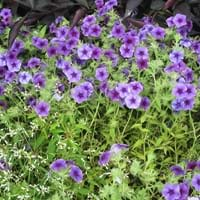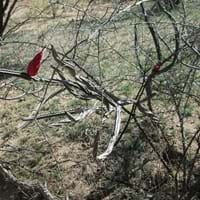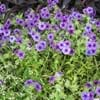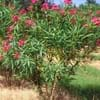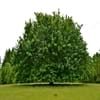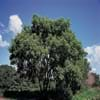Life Span
Annual
Perennial
Type
Flowering Plants
Flowering Plants
Origin
Hybrid origin, North America
Mexico, Caribbean, Central America
Types
Not Available
not available
Habitat
Not Available
Desert
USDA Hardiness Zone
4-8
12-15
Sunset Zone
1a, 1b, 2a, 2b, 3a, 3b, 4, 5, 6, 7, 8, 9, 10, 11, 12, 13, 14, 18, 19, 20, 21
H2
Habit
Cushion/Mound-forming
Weeping
Flower Color
Pink, Lavender
White, Ivory
Flower Color Modifier
Bicolor
Not Available
Fruit Color
Not Available
Non Fruiting Plant
Leaf Color in Spring
Dark Green
Green, Dark Green
Leaf Color in Summer
Dark Green
Green, Dark Green
Leaf Color in Fall
Dark Green
Green, Dark Green
Leaf Color in Winter
Not Available
Olive, Dark Green
Leaf Shape
Ovate elongated
Long and slender with very sharp edges
Plant Season
Spring, Summer, Fall
Summer
Sunlight
Full Sun, Partial Sun, Partial shade
Partial shade
The pH of Soil
Neutral
Neutral, Alkaline
Soil Drainage
Well drained
Well drained
Bloom Time
Summer, Late Summer, Early Fall
Early Summer, Summer
Tolerances
Not Available
Drought
Where to Plant?
Container, Ground, Pot
Container, Ground
How to Plant?
Root Division
Grafting, Seedlings, Transplanting
Plant Maintenance
Medium
Medium
Watering Requirements
Do not water excessively
Does not require lot of watering, Water once every two or three weeks, Water when soil is dry
In Summer
Lots of watering
Lots of watering
In Spring
Moderate
Moderate
In Winter
Average Water
Average Water
Soil pH
Neutral
Neutral, Alkaline
Soil Drainage Capacity
Well drained
Well drained
Sun Exposure
Full Sun, Partial Sun, Partial shade
Partial shade
Pruning
Remove dead flowers
Remove damaged leaves, Remove dead branches, Remove dead leaves
Fertilizers
All-Purpose Liquid Fertilizer
All-Purpose Liquid Fertilizer
Pests and Diseases
Not Available
Aphids, Mealybugs, Root rot, Scale, Viruses
Plant Tolerance
Not Available
Drought
Flower Petal Number
Single
Semi-Double
Foliage Texture
Medium
Bold
Foliage Sheen
Matte
Not Available
Attracts
Butterflies, Hummingbirds, Rabbits
Not Available
Allergy
Not Available
Not Available
Aesthetic Uses
along a porch, deck or patio, Ornamental use, Showy Purposes
Beautification
Beauty Benefits
Not Available
Not Available
Environmental Uses
Food for animals
Air purification
Medicinal Uses
No Medicinal Use
Diabetes, Hangover
Part of Plant Used
Flowers
Flowers, Fruits, Leaves
Other Uses
Food for animals, Used as Ornamental plant
Employed in herbal medicine, Fine spines and trichomes are used as fiber for weaving, Used As Food
Used As Indoor Plant
No
No
Used As Outdoor Plant
Yes
Yes
Garden Design
Cutflower, Feature Plant, Mixed Border, Wildflower
Container, Hanging Basket, Houseplant, Tropical
Botanical Name
Phlox paniculata 'Sherbet Cocktail'
Peniocereus greggii
Common Name
Hybrid Phlox, Sherbet Cocktail Garden Phlox
Night Blooming Cereus, Reina de la noche, Arizona queen of the night
In Hindi
Hybrid Phlox
Night Blooming Cereus
In German
Hybrid Phlox
Nachtblühende Cereus
In French
Phlox Hybrid
Night Blooming Cereus
In Spanish
Phlox híbrido
Reina de la noche
In Greek
υβριδικά Phlox
Night Blooming Cereus
In Portuguese
Phlox híbrido
Night Blooming Cereus
In Polish
Hybrydowy Phlox
Noc Blooming Cereus
In Latin
Hybrid Phlox
Maria Maria Cereus
Phylum
Magnoliophyta
Magnoliophyta
Class
Magnoliopsida
Magnoliopsida
Order
Ericales
Caryophyllales
Family
Polemoniaceae
Cactaceae
Clade
Angiosperms, Asterids, Eudicots
Angiosperms, Core eudicots, Eudicots
Tribe
Not Available
Pachycereeae
Subfamily
Not Available
Cactoideae
Season and Care of Hybrid Phlox and Night Blooming Cereus
Season and care of Hybrid Phlox and Night Blooming Cereus is important to know. While considering everything about Hybrid Phlox and Night Blooming Cereus Care, growing season is an essential factor. Hybrid Phlox season is Spring, Summer and Fall and Night Blooming Cereus season is Spring, Summer and Fall. The type of soil for Hybrid Phlox is Loam and for Night Blooming Cereus is Sand while the PH of soil for Hybrid Phlox is Neutral and for Night Blooming Cereus is Neutral, Alkaline.
Hybrid Phlox and Night Blooming Cereus Physical Information
Hybrid Phlox and Night Blooming Cereus physical information is very important for comparison. Hybrid Phlox height is 65.00 cm and width 55.00 cm whereas Night Blooming Cereus height is 180.00 cm and width 90.00 cm. The color specification of Hybrid Phlox and Night Blooming Cereus are as follows:
Hybrid Phlox flower color: Pink and Lavender
Hybrid Phlox leaf color: Dark Green
Night Blooming Cereus flower color: White and Ivory
- Night Blooming Cereus leaf color: Green and Dark Green
Care of Hybrid Phlox and Night Blooming Cereus
Care of Hybrid Phlox and Night Blooming Cereus include pruning, fertilizers, watering etc. Hybrid Phlox pruning is done Remove dead flowers and Night Blooming Cereus pruning is done Remove damaged leaves, Remove dead branches and Remove dead leaves. In summer Hybrid Phlox needs Lots of watering and in winter, it needs Average Water. Whereas, in summer Night Blooming Cereus needs Lots of watering and in winter, it needs Average Water.
